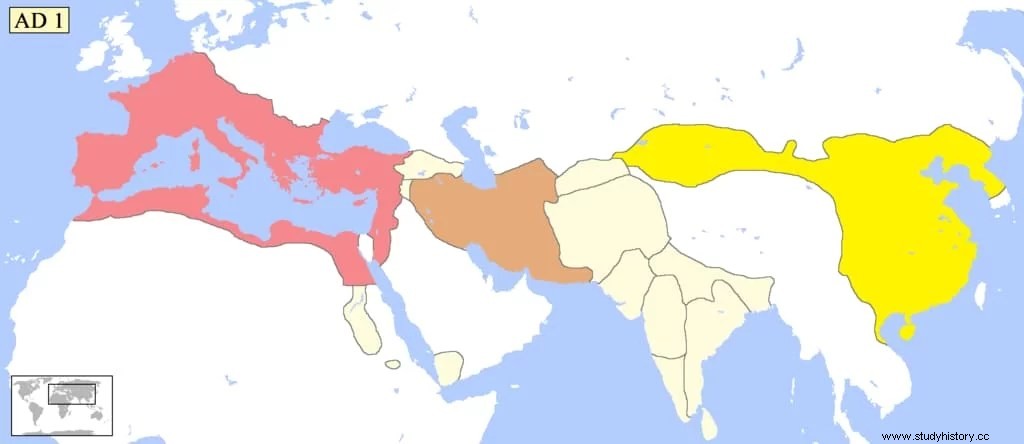Until the end of the 16th century, all Chinese maps identified with the exonym Da Qin to the city of Rome. An exonym, as we explained some time ago, is the term used by speakers of a language to refer to a place that is outside their scope. A clear example would be the term London, which is how we Spanish-speakers call the place that its own English-speaking inhabitants call London. London is therefore one of the many exonyms of the British capital . But originally the term designated not only the city but the entire Roman Empire.
The literal meaning of Da Qin is Greater China , where Qin would be the name of the founding dynasty of the first Chinese empire and its first emperor Qin Shi Huang, a term from which China derives. .
The prefix Da (large) would highlight the Roman power by placing it on a par with that of the Qin empire. The Romans, for their part, called Serica (literally land of silk , derived from the Greek Serikon ) to those distant lands.

Although the Chinese never reached the Roman Empire during ancient times, there was an attempt, the embassy sent by General Ban Chao with the aim of establishing diplomatic relations. According to the Hou Hanshu (Book of the Late Han) compiled by the historian Fan Ye in the 5th century AD:
Gan Ying did not make it to Rome, but instead stopped when he reached the Persian Gulf on the border of the Parthian empire, dismayed to learn from Parthian sailors that the journey was dangerous and could take two years . But there he was probably able to gather information about that great empire far to the west, and he wrote, as has been recorded in later sources:
Upon his return, he informed Ban Chao that Rome could only be reached after a very dangerous sea crossing (as the Parthians, who had no interest in being eliminated as middlemen on the Silk Road, had wrongly told him), which led the general to conclude that it was not worth seeking allies so far away, and therefore an embassy was never sent again.

Had he succeeded in his journey, Gan Ying would have been brought before Emperor Trajan in the first year of his reign, probably unleashing a very different chain of events from the one that actually happened for both civilizations.

Curiously, Gan Ying speaks in a very confusing way about the use of silk in Rome, and recognizes that it is the Parthians who block the contact of both great empires:
Of course the fact that Gan Ying was the first envoy to the Roman Empire is what traditional Chinese sources say. Some researchers suspect that he was not, if we take into account what the historian Lucio Anneo Floro, who lived at the end of the 1st century AD, narrates in his work Epitome de Tito Livio bellorum omnium annorum DCC. :
Those Beings The ones Floro refers to could be nothing less than Chinese. Let us remember, as we said at the beginning, that the Romans called China Serica . Historian Henry Yule, who studied the matter without being able to find any other mention of the Beings in Roman sources, he speculated that they were most likely merchants rather than diplomats, and hence Chinese historians consider Gan Ying's to be the first attempt at an official embassy.
Circa 618 AD the new Tang dynasty began to use a new term to distinguish the Eastern Roman Empire (known to historians as the Byzantine Empire):Fulin . Experts do not agree on its origin.
